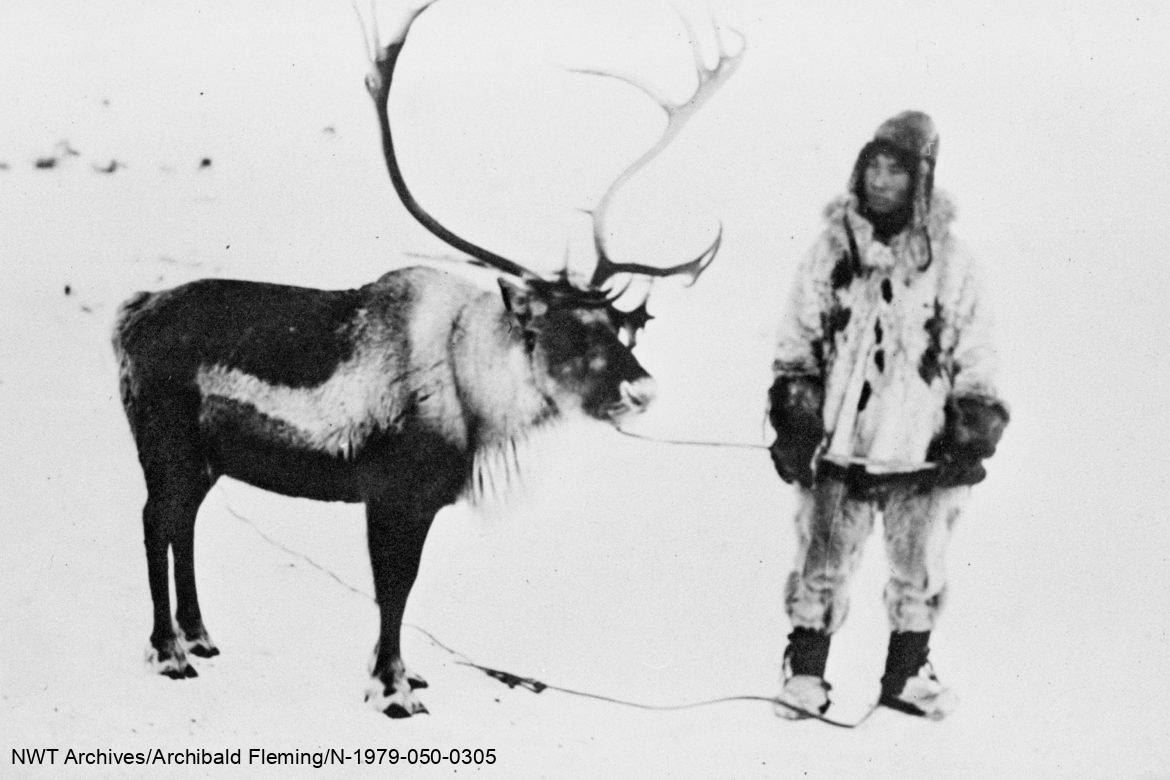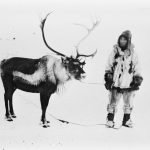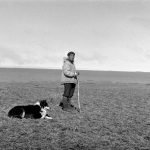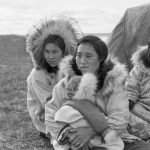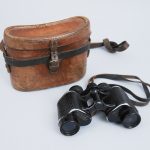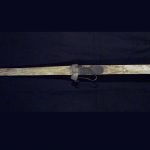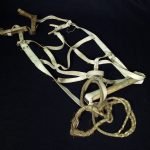1935
NWT Reindeer Herding
During the early 1920s, the federal government began receiving disturbing reports from field observations that northern caribou populations were in steep decline. This meant that the Inuvialuit of the western Arctic and Inuit further east would soon be impacted. The Americans had faced the same problem in Alaska in the early 1890s. They brought in a large herd of European reindeer and attempted to establish reindeer herding as a way of life for the Inuit of northern Alaska.
In 1929 the Canadian government followed suit and entered a contract with a company in Nome, Alaska, to deliver 3000 reindeer to the Canadian Arctic. In March 1935, after a five-year trek across northern Alaska and the Yukon, 2370 reindeer arrived in the Mackenzie Delta.
During a three-year apprenticeship program, the government planned to take young Inuvialuit from church-run residential schools and train them in reindeer husbandry and herding techniques. Each program graduate would then be responsible for a herd of reindeer and set up in an area east of the Mackenzie Delta near Reindeer Station, where they would take care of these reindeer and sell the offspring. This sounded like a good plan, but the financial return, even from a herd of a thousand animals, was much less than one could make as a hunter and trapper. Reindeer herding was also difficult and lonely. Only two men came forward to become apprentices during the first few years of operation.
From 1935 through to the mid-1950s, only seven independent herds were established. During those 20 years, many setbacks occurred, including the drowning of several crucial Inuvialuit reindeer herd managers on the schooner Calla in September 1944.
The government experiment gradually declined over the latter half of the 1950s. The end for this program came about due to the lure of good-paying construction jobs on two major northern projects, the Distant Early Warning (DEW) Line and the construction of the new town of Inuvik. In 1960, the federal government admitted defeat, and the herd was sold. There is one remaining herd in the Inuvik area, managed by the Inuvialuit Regional Corporation since 2021.
